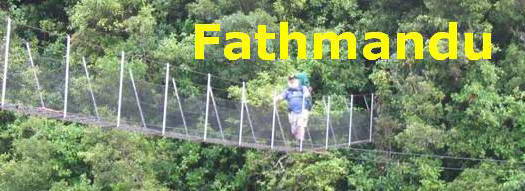|
14-21 November 2009
Norfolk Island Adventure
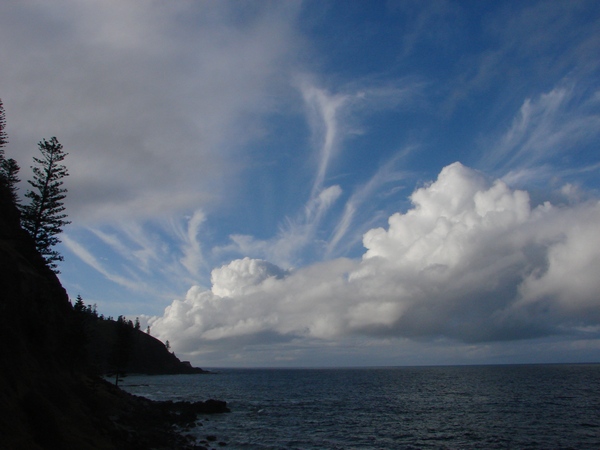
(My apologies at the outset for errors and omissions which will likely be glaringly obvious to locals but less so to a tourist with seven days to spare.)
This is a quick look at some of the possibilities available for the walking enthusiast on Norfolk. The northern part of the island is largely "National Park" — you soon get used to a community of around 2000 having a national park, and, for that matter, a Prime Minister, a Minister of Finance and so forth — and the bush is eerily familiar if you don't look too hard, except of course for the Norfolk Pine which features almost universally.
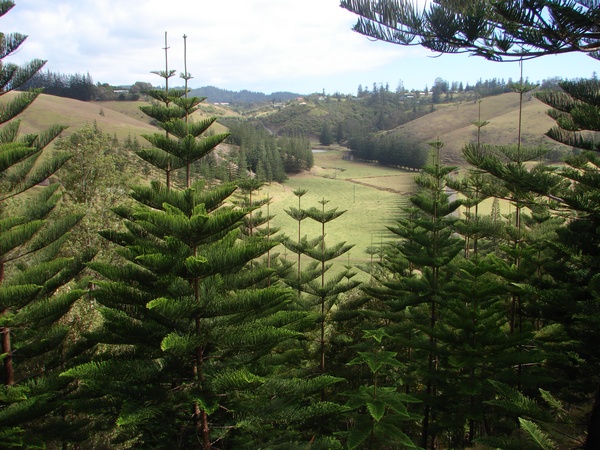
Arthur's Vale
Many of the plants and trees have very close relations in the New Zealand bush, and at first glance you could be forgiven for thinking you are looking at a nikau, or a kawakawa, or a cabbage tree. The native oleander is a pittosporum, and our fragile trackside dianella has a more robust cousin there exhibiting the same wonderfully purple shiny berries.
I left the northern walking tracks until the last day, and managed only a couple of hours worth. Thinking back, I could have devoted a good deal more time to them, but loafing away a sunsoaked hour or two at Emily Bay in the mid-afternoon has also a lot going for it. And it's probably a good idea to organise your walking time for early-mid morning or mid-late afternoon to avoid the hottest part of the day.
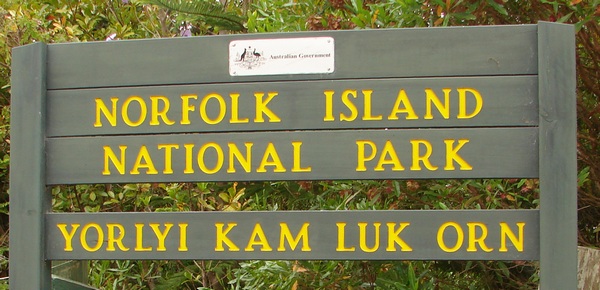
We started at Mount Pitt, the highest point on the island.
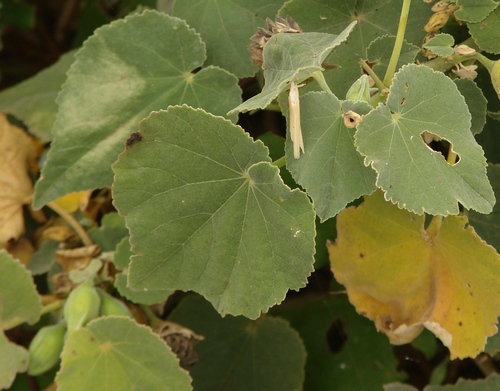
If I have made a correct identification, this plant is the Norfolk Island abutilon, Abutilon julianae, a relation of the Chinese Lantern. It was thought to be extinct early last century, last seen on Mt Bates in 1913, but a few seedlings were located many years later in 1985 at Philip Island, just off the Norfolk coast, once the feral rabbit population was removed, and it is once again, with a bit of help, becoming more common in the park. It is strange to be in the company of a plant with probably only a few hundred specimens in existence.
Mt Pitt and Mt Bates are part of a larger crater of the volcano that produced Norfolk Island. This track takes us along the rim of the crater from Mt Pitt to Mt Bates. It is wide, grassy and tourist friendly, and where it is not there are well constructed boardwalks and stairs.
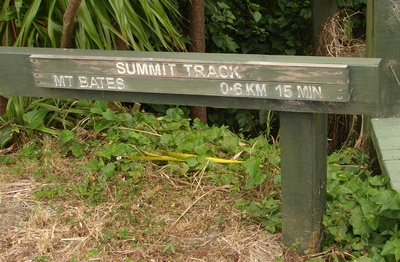
Here we go...
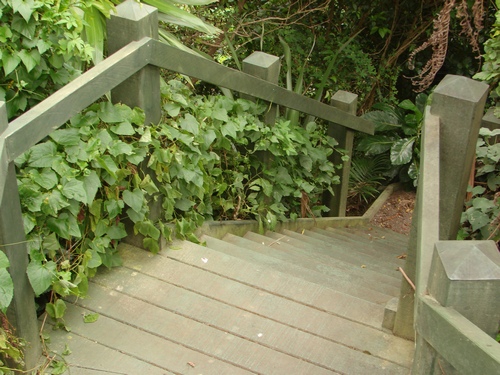
Here is what looks like a nikau. Nikau is Rhopalostylis sapida. This is R. baueri.
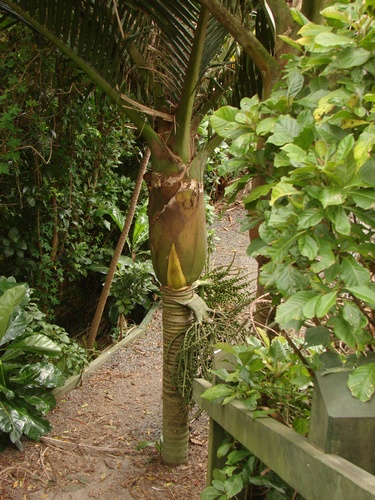
The seeds are oval, as opposed to the round seeds of the New Zealand species.
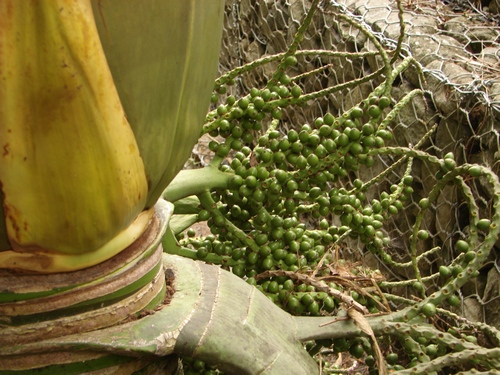
At this stage we are walking parallel to the road above and the bank, like a good many others on the island, has been stabilised by the use of large wire baskets filled with rock. By the time the wire rusts out, there is enough seepage of fine material into the rock mass to stabilise it more or less permanently. The baskets are known as gabions, and there is a whole small subsection of engineering devoted to their use and placement.
To the left is a small Norfolk Island cabbage tree, of which more shortly.
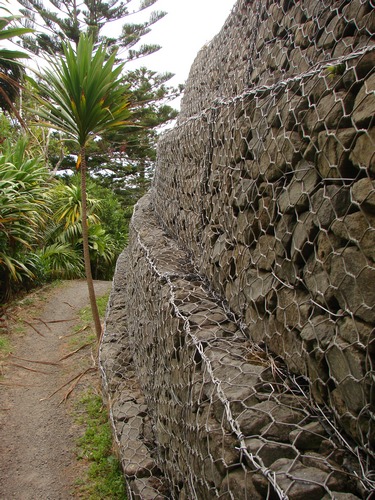
This vine, Ipomoea cairica, is found throughout the island and its light purple flowers are very similar in form to the dark blue morning glory we see at home, also common here. It was introduced early on as a garden ornamental and is now causing some problems.
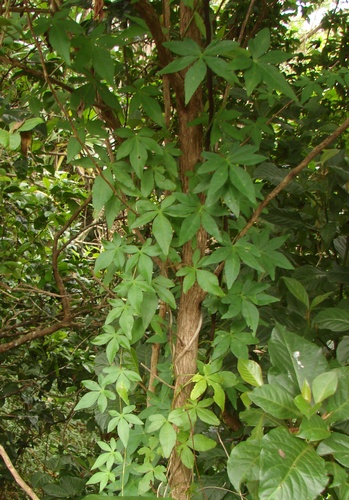
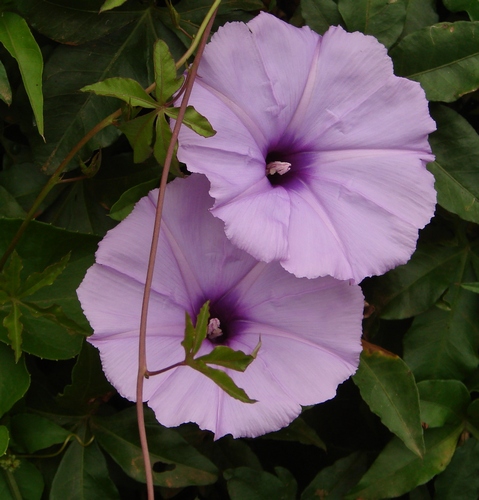
Here beside the track is a young Meryta latifolia, which reminds me of our New Zealand puka, and when I follow this up, sure enough, puka is Meryta sinclairii. It is described in the Norfolk Island botanic gardens as rare and endangered, but at least in the park seems to be thriving.
(Meryta has the added disadvantage of being dioecious, which means it has separate male and female plants. When numbers become low this can be a critical factor, if trees of both sexes are not growing close enough for the female flowers to be pollinated by the male.)
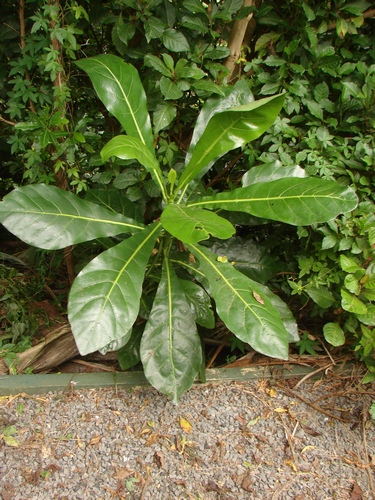
This will give you an idea of the size of the leaf.
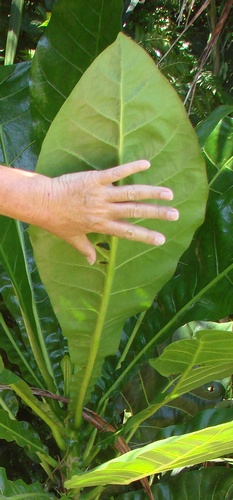
Next to catch my attention is what looks like an akeake, and when I follow this up later it is the same Dodonaea viscosa we have in New Zealand, but I have never before encoutered akeake as big or with leaves and flowers so vigorous or intensely coloured.
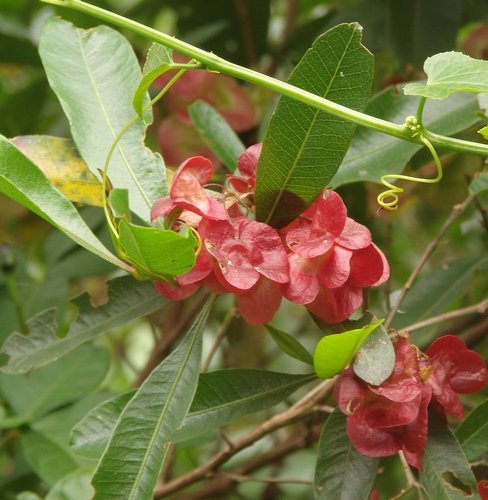
Later on the track when I bump into a couple of magnificent specimens my first, distant, identification is pohutukawa.
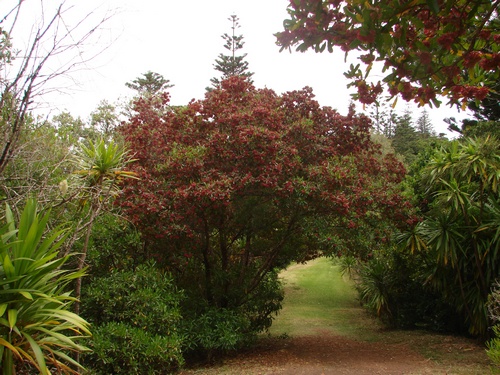
There is also a specimen or two with a paler flower, in between the red and the lime-green form common in New Zealand.
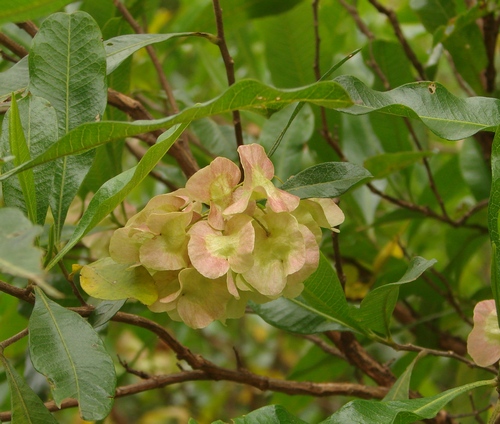
Anyhow, let's move along.
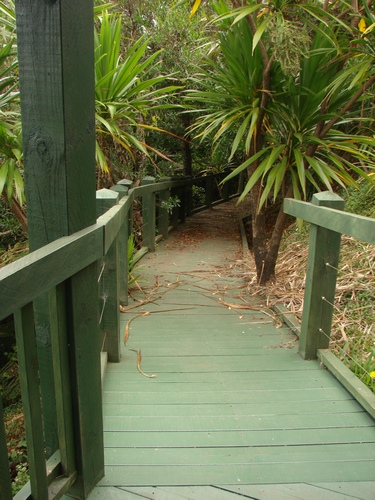
It's definitely easy going, but even so,
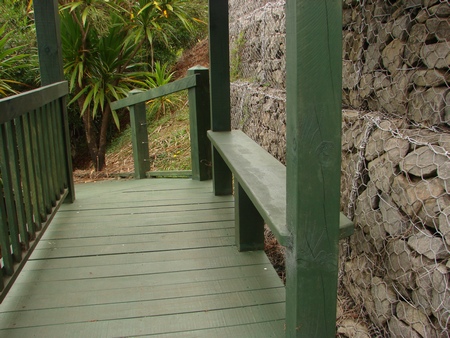
seats are provided at regular intervals. The bulk of the island's tourists are honeymooners or old people, the "newly wed and the nearly dead" as they are locally known, so it's appropriate that progress along the track takes its time.
|
